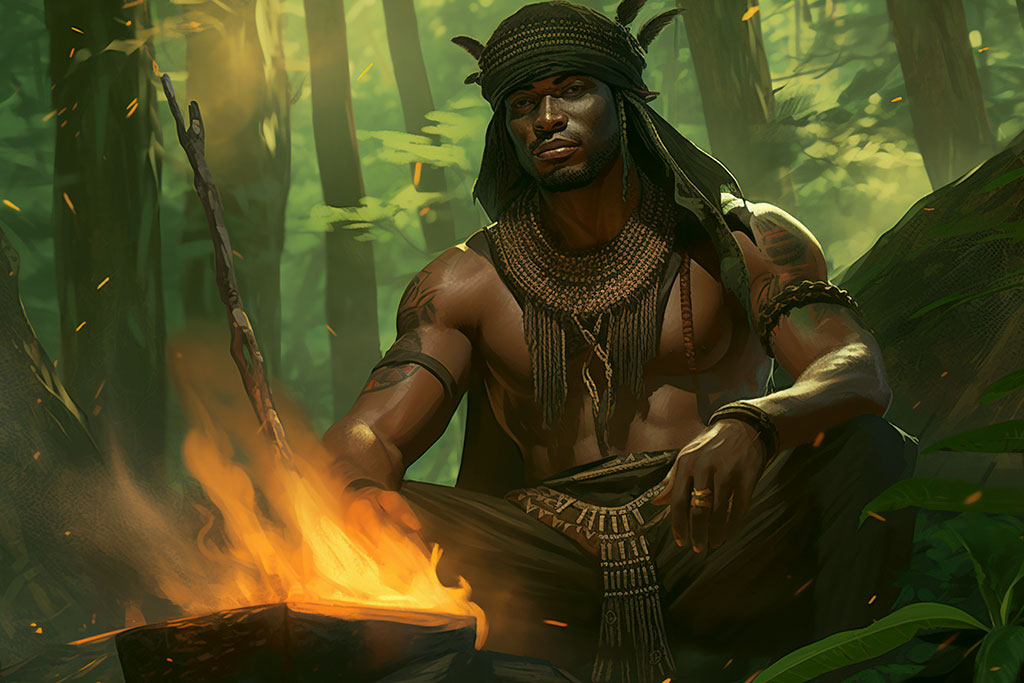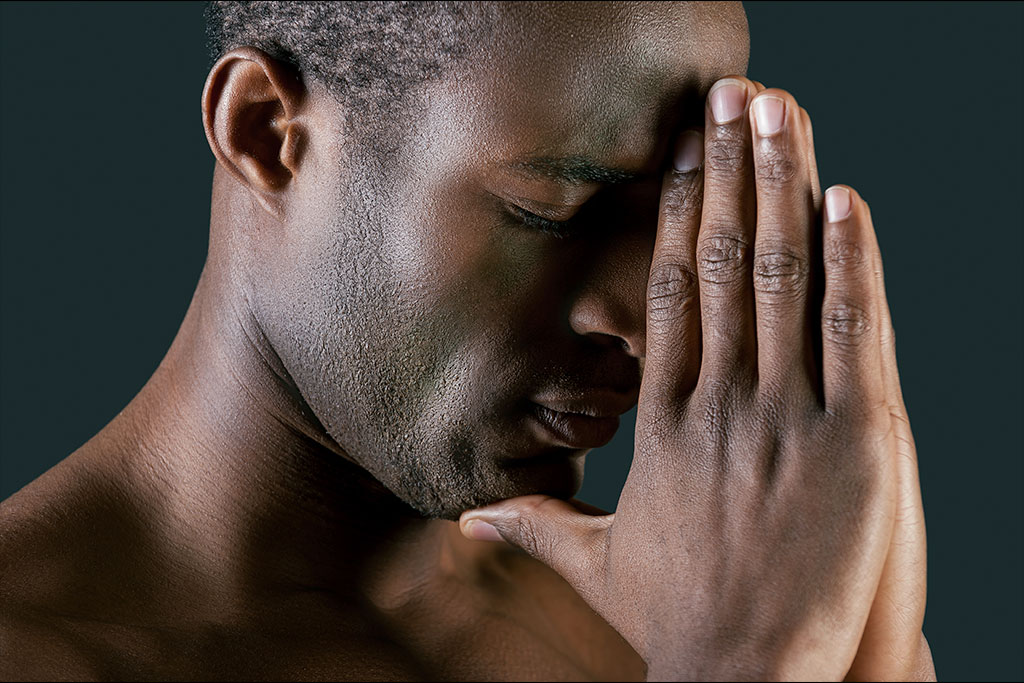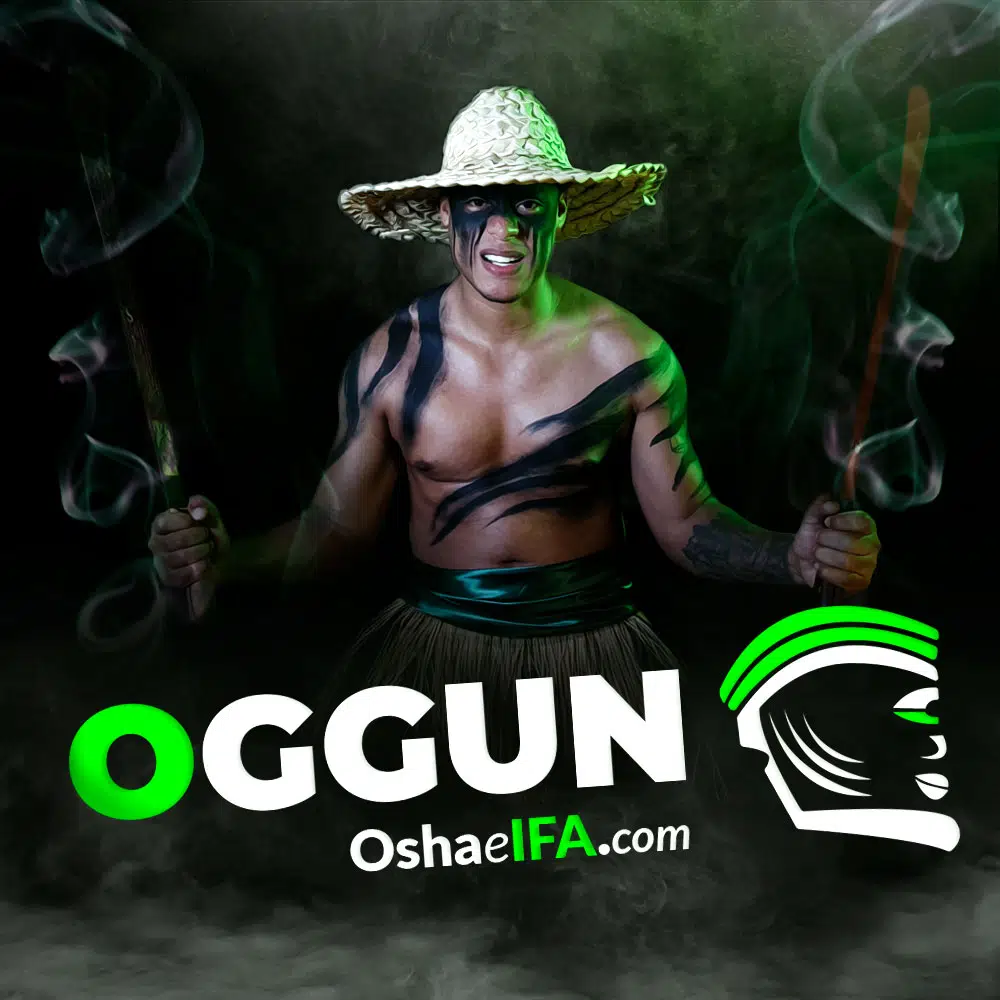Paths of Oggun: The different avatars of the Iron deity

Within the practices of the Yoruba religion, Ogun He is an Orisha of great relevance, adored for his virtues and powers, among which his strength, courage and mastery over war and technology stand out. However, although this worship is very popular in the Yoruba territory, it can vary depending on the region, which makes his worship richer and more complex, giving way to the existence of the multiple avatars or paths of Oggun, which represent specific aspects of his personality and the way he is perceived by his different devotees.
«In the minds of his followers, Oggun is conventionally presented in two images, one being a terrifying specter, the violent warrior, fully armed and loaded with hideous spells and medicines to destroy his enemies. The other is society's ideal man, the leader known for his sexual prowess, who relentlessly nurtures, protects, and pursues truth, fairness, and justice. Clearly, this African figure fits the creator/destroyer archetype. But trying to assign it a clear label is itself an injustice, for behind the label lies a complex variety of notions. As his devotees say, “Ogun has many faces.”
Barnes, Sandra. Ogun Africa. Old and new world. (1997, p. 11-12).
Another relevant aspect is that, through these paths, practitioners of the Yoruba religion can connect with specific aspects of the nature of Ogun, providing their help to solve various aspects of daily life.
The names, characteristics and attributes that distinguish Oggun's ways are:
- Ogun Alaguede: also called Ogún Alagbo is "the blacksmith". In this avatar, Ogún is the Orisha who takes care of all those who work in blacksmithing or similar professions. He is tireless, works day and night. In some cases he is hot-tempered and intractable. He is the husband of Yemayá Okute. Those who seek success in their technical and craft work go to Ogun Alagbede, offering him tools and iron objects as offerings. His foundation has a base, which carries a rod with a handle in the center, which holds a secret charge. This Ogun is never cleaned. He also gets an iron palm with its respective load and a metal dummy with an erect penis.
- Ogun Onile: he is "the owner of the land." He is called that when he walks through unexplored land, searching and discovering new places to settle. His title refers to the first to arrive at a place, settle there, and begin to work the land. Its base uses 14 tools and is covered with red cloth.
- Ogun Arere: he is also called "the butcher." A sickle is attached to it. He is very strong and brave. He does not forgive his enemies.
- Ogun Shibiriki: is the steel maker. They also call him "the killer." He has serious differences with Shango. He is really tough and of great courage, he fights crazed and full of fury. The base of him carries an eerin with 21 Tools.
- Ogun Kobu Kobu: is the foreman. He walks with a whip. Its foundation has 11 pieces, a rail and a bellows.
- Ogun Meyi: it is said that he has 2 faces or facets. One of them shows him as a good head of the family, hardworking and very calm. The other side, he is incredibly violent, damaging and also thirsty for blood. The base of it carries twice as many pieces and a gold chain with 21 Ogun tools.
- Ogun Aguanile: he is known as "The conqueror of the Earth." He is the owner of the bush.
- Ogun Meye: he is the warrior who transformed into 7 warriors. He is Shango's opponent. 3 spears are attached to it.
- Ogun Adaiba: he is a warrior, his worship and veneration is carried out through his machete. He uses an iron or steel machete, where the other artifacts are rooted.
- Ogun Jobi: he is the tracking warrior, he waits on the mountain and attacks by surprise. He is very violent, terrible and spreads his evil on his adversaries, as well as on the territory of his enemies. His main strategy is to stay hidden in the forest, he has great patience to wait for the right moment to intervene. His personality is markedly aggressive, the result of his anger is total ruin.
- Ogun Adeola: he is the warrior who ended up being king. He wears his crown with honor and with wisdom, providing safety and health to his followers.
- Ogun Ja: He is a terrible warrior, really tough. It is said that he likes to bathe in blood. He eats dogs. He causes arguments and also a lot of physical violence, if he stops paying attention he causes a lot of havoc. Some stories link it with Osagriñán and Yemayá.
- Ogun Oloko: This path is a landowner and farmer, he owns and works the land. You are asked for help so that the harvests are excellent. It is also called Olorukó, Olokuló, Arokó.
- Ogun Aroye: He is extremely terrible and spontaneous, full of temper and also disgust. Very irrational. He lives outside the house due to his bad temper and dangerousness. He lives in a small house that is made for him next to Eshu Laroye, his brother and also his partner. If this Oggun and this Eshu are not well cared for, they are capable of causing numerous complications and also misunderstandings in the occupants of their home.
- Ogun Onira: is the one that is connected with the rain, the mud and the murky waters of the river. This name is offered to him because on this road he was king of the city of Ira, together with Oya Nira.
- Oggun Onire: he is the conqueror, warrior and also general of the military. He was king of the city of Ire.
- Ogun Oke: he is the owner of the mountains, he is also called Oggún Afanamule and Ogún Ogumbí.
- Ogun Aladu: he is an Ogun who fights wars alongside Yemayá.
- Ogun Valanyé: his name can also be Ogún Valanyé or Valenyé is a farmer.
- Ogun ñako ñiko: he is a murderer, it is also said that he is a bullfighter.
- Ogun Olode: He is the Chief of the hunters.
- Ogun Soroke: his name means "he who speaks the loudest."
- Ogún Warí: is the strongest, most destructive and violent personification of Ogun.
- Other paths of Ogun are: Atana tesi, Eu, Kuelenu, Lama, Rile, Amo, Bieurike, Beri beri, Laine, Leti, Abaniye, Deka, Ofaramule, Bi, Alare, Olujo olo, Dori Obbeyono, Lameyi, Eleukue, Onileji, Olumekin, Aebeja, Oma Gbada, Ala pa, Ohunhun, Odimudimu, Oggare, Yaya, Olela, Kerebiti, Bebeleke, Kada, Lele iwake, Orikuti, Kuerikuo, Alakaiya, Toda (iroso tolda), Irenoje, Orishoko, Lakagba, Ajankan, Lerin , Otonenofe, Onna, Manbale, Elewuiri, Areko, Edeyi, Alesheshein, Ajala, Onigbajamo, Bombéenile, Lembebede, Akere, Elegun Ajao, and Gmaneki.
You can read: Children of Oggun: How are they? Names and Prohibitions
References
- Ifá Eagle; Gamez, Leonel & Conde, Eduardo (sf). (2012). Defending our traditions (II) Available in Águila de Ifa. Yoruba Society of Mexico and Águila de Ifá Foundation.
- Ifá eagle. (2015). Leonel Gamez Osheniwo. Teachings of a Friend, a Brother, a Teacher. Eagle of Ifá Foundation.
- Barnes, Sandra (1997). Ogun Africa. Old and new world. Second extended edition.
- Caudillo, Diane Elizabeth. (2007) Prayers to the orishas a look at Santería.
- De Sousa Hernandez, Adrian. (2005). The Orishas in Africa. An approach to our identity. Editorial of Social Sciences.
- Ifa Orilana Aworeni Odumola Sowunmi. (2009). The nature of the Orisas. Rosebud Editions.
- Ortiz, Fernando. (1940). Cuban Bimester Magazine. Vol. XLV
- R. Prandi, "African Gods in contemporary Brazil," International Sociology, p. 652.
- Shango Omo Asa. (2021). Orisha's power. Independent publication.
- Silva, Marie. (2021). Orishas: The Definitive Guide to the African Orisha Deities and Their Presence in Yoruba, Santeria, Voodoo, and Hoodoo, with an Explanation of Dilogun Divination.



